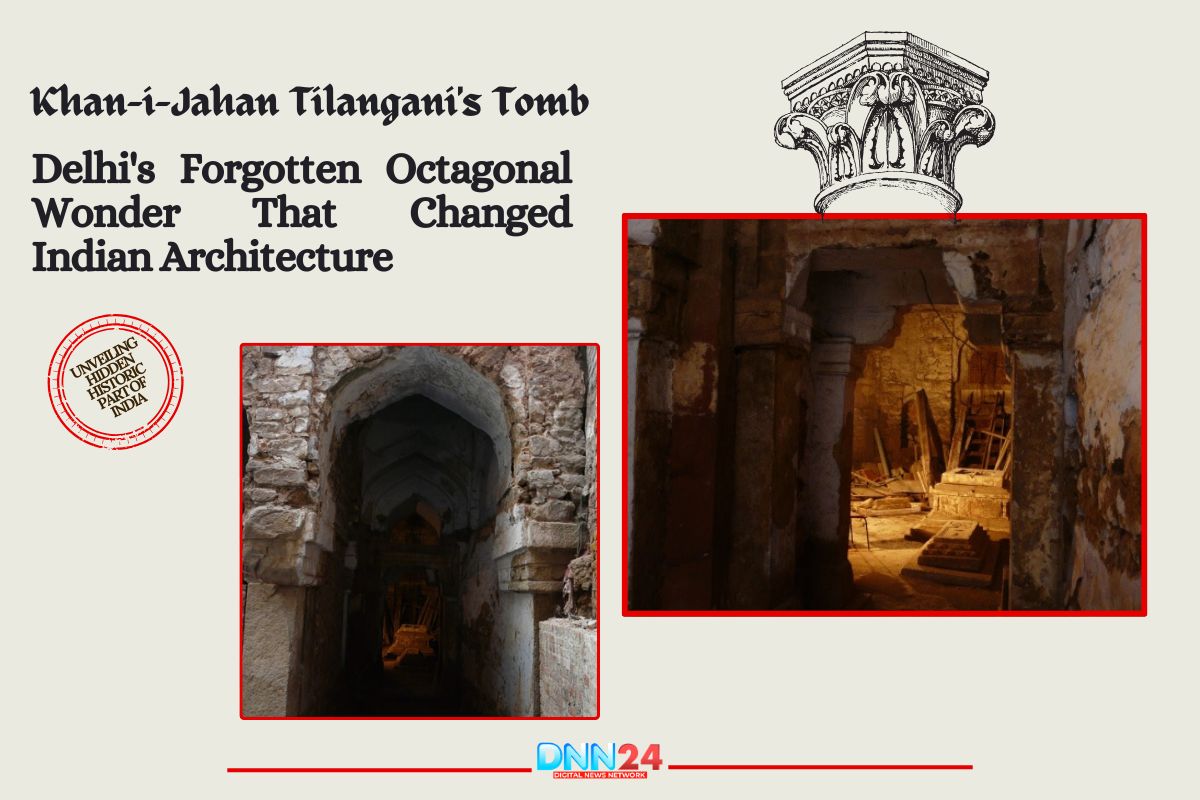The 14th century was a time of conquest and upheaval across India. Khan-i-Jahan Tilangani’s Tomb stands quietly in Nizamuddin, unnoticed by thousands who pass daily, yet it pioneered the octagonal design that shaped centuries of Indian architecture. In 1323, when Muhammad bin Tughluq’s armies stormed through Warangal, they carried back treasures, prisoners, and among them, a Telugu Brahmin warrior named Nagaya Ganna. He had served King Prataparudra of the Kakatiya dynasty with distinction. Nobody could have predicted that this captured soldier would one day become the most powerful administrator in the Delhi Sultanate.
After reaching Delhi, Nagaya Ganna converted to Islam and took the name Malik Maqbul Tilangani. The surname Tilangani marked his origins in Telangana, a label he carried with pride throughout his life. His talents did not go unnoticed. Through careful administration and unwavering loyalty, he caught the attention of Sultan Firoz Shah Tughlaq. The Sultan appointed him Wazir, the empire’s chief minister, around 1351. Historical accounts describe Maqbul as a man of exceptional honesty and capability. He managed the treasury, settled disputes between quarrelsome nobles, and kept the vast empire functioning smoothly.
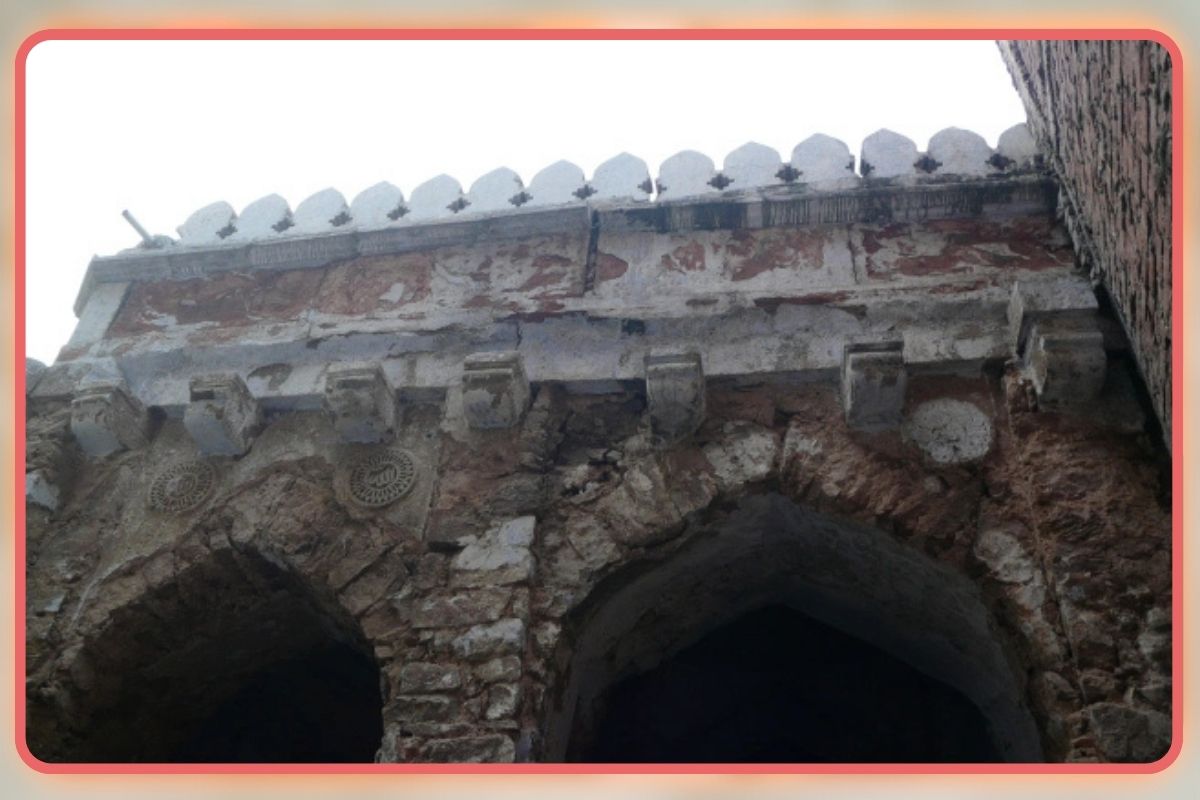
Firoz Shah trusted him so completely that he promised Maqbul’s son would inherit the position after him. This was extraordinary. At a time when betrayal was common and ministers rose and fell like seasons, a man from the distant south, a convert from another faith entirely, had become indispensable to the throne. When Malik Maqbul died in 1369, the empire mourned a leader who had bridged cultures and served with integrity. His tomb, completed in 1388, still stands in Delhi’s Nizamuddin area.
India’s First Octagonal Tomb: An Architectural Breakthrough
The Tomb of Khan-i-Jahan Tilangani holds a special place in Indian architectural history. It is the first octagonal tomb ever built in India. Before this monument, such eight-sided designs were rare in the subcontinent. The closest comparison was the tomb of Shah Rukn-e-Alam in Multan, built earlier in a similar style. Some historians, including Percy Brown, suggest the design may have drawn inspiration from Islamic architecture in West Asia, perhaps even the Dome of the Rock in Jerusalem.
But what makes this tomb remarkable is how it became a template. The octagonal plan with its elegant proportions influenced generations of builders. The Sayyid, Lodi, and Sur dynasties all borrowed from this design in their own monuments. Eventually, this architectural language evolved into the magnificent domed structures of the Mughal era. The tomb consists of a central octagonal chamber surrounded by a veranda. Each side of the octagon features three arched openings, and each corner is topped with a small decorative dome. Rising above everything is the central dome, which interestingly carries an amalaka at its peak. This lotus-shaped element is borrowed from Hindu temple architecture, showing how builders combined different traditions.
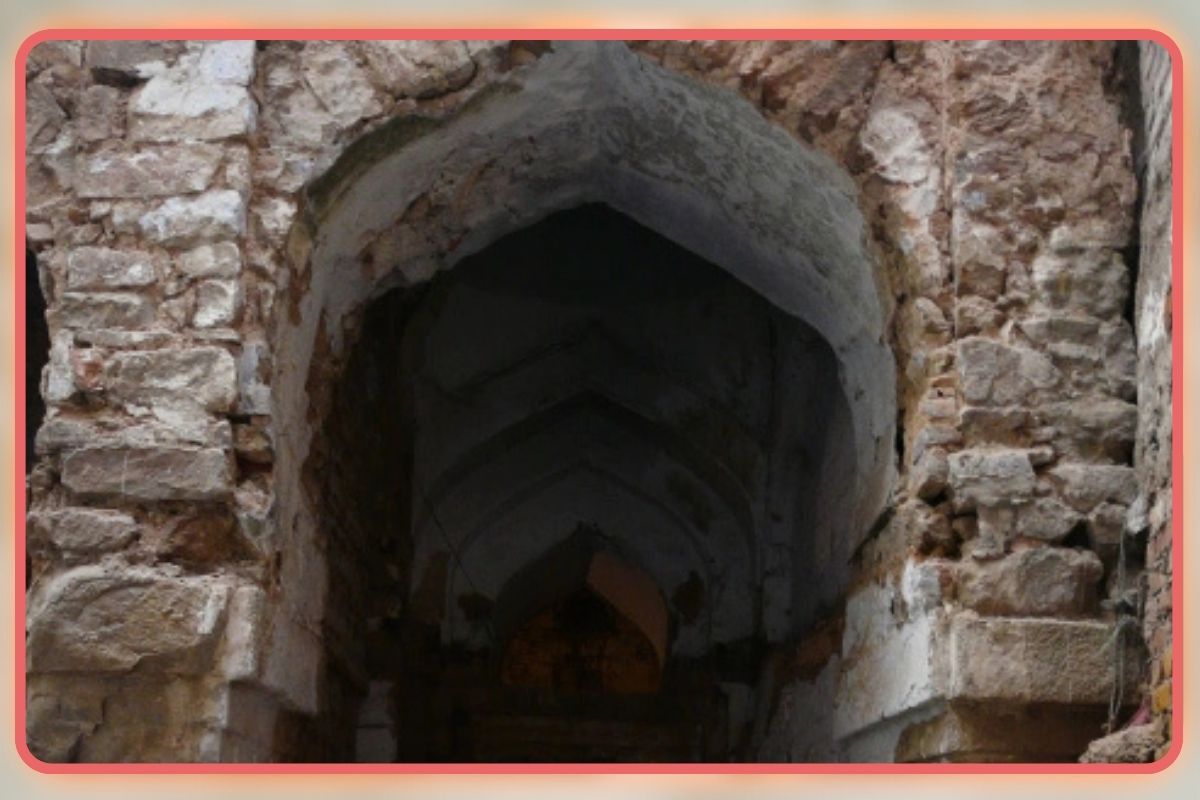
The proportions are carefully balanced. Nothing feels excessive or incomplete. Inside the chamber lies a cenotaph marking the grave below. The thick stone walls and measured spaces create an atmosphere of quiet dignity, befitting a man who spent his life in service. This tomb demonstrated that architectural innovation could emerge from synthesis, achieved by bringing together ideas from across regions and faiths.
Hidden in Plain Sight: A Monument Lost to Neglect
Today, locating the Tomb of Khan-i-Jahan Tilangani requires patience and a bit of luck. Located in Nizamuddin West, it sits uncomfortably close to the famous Nizamuddin Dargah, yet remains unknown to most visitors. The neighbourhood has grown around it, swallowing the monument in layers of concrete and brick. Illegal constructions press against seven of its eight sides. Structures and dwellings have occupied the veranda that once surrounded the tomb. Until recently, some families living within the monument were unaware of its historical significance.
Despite being listed as a protected heritage site by municipal authorities, the tomb receives little attention. There are no information boards, no guides, and no proper access path. Tourists who come searching for it often give up and leave frustrated. Archaeologists and conservation experts have repeatedly raised concerns. The monument faces threats from encroachment, structural damage, and simple neglect. Some restoration work has been carried out by the Aga Khan Trust for Culture, focusing on the central dome and chamber. This effort saved the core structure from further decay.
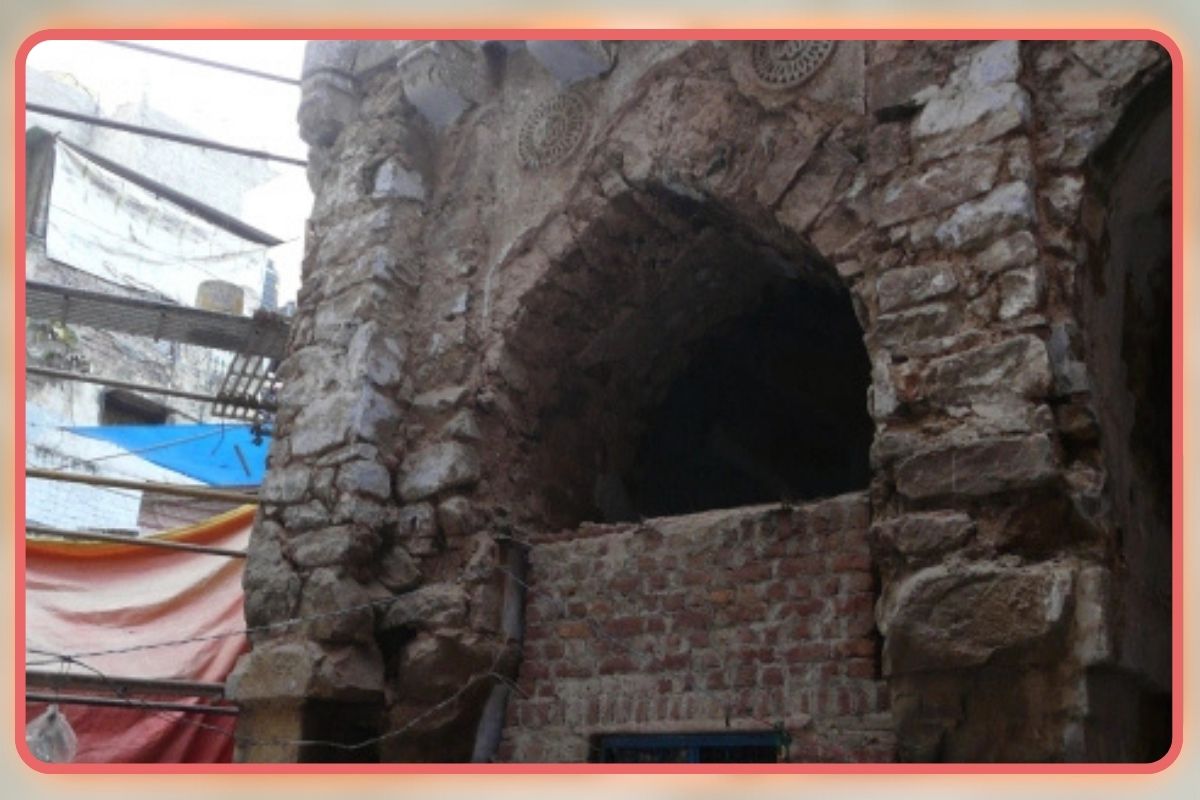
But the problem runs deeper. As Delhi expands relentlessly, old monuments compete for space with homes, shops, and modern infrastructure. What should be a proud landmark has become almost invisible. The lanes of Nizamuddin bustle with life, filled with the aroma of street food and the sound of devotional music. Yet amid all this energy, Malik Maqbul’s tomb stands forgotten, its stories trapped behind walls built by time and carelessness.
Why This Tomb Still Matters
The story of Khan-i-Jahan Tilangani carries lessons that remain relevant. His rise from a captured warrior to a trusted minister demonstrates how talent and dedication can overcome barriers of origin and faith. In an age of rigid social hierarchies, he proved that merit could triumph. His life reminds us that India’s history has always been richer and more complex than simple narratives allow. People moved across regions, adopted new identities, and contributed to building empires that belonged to everyone.
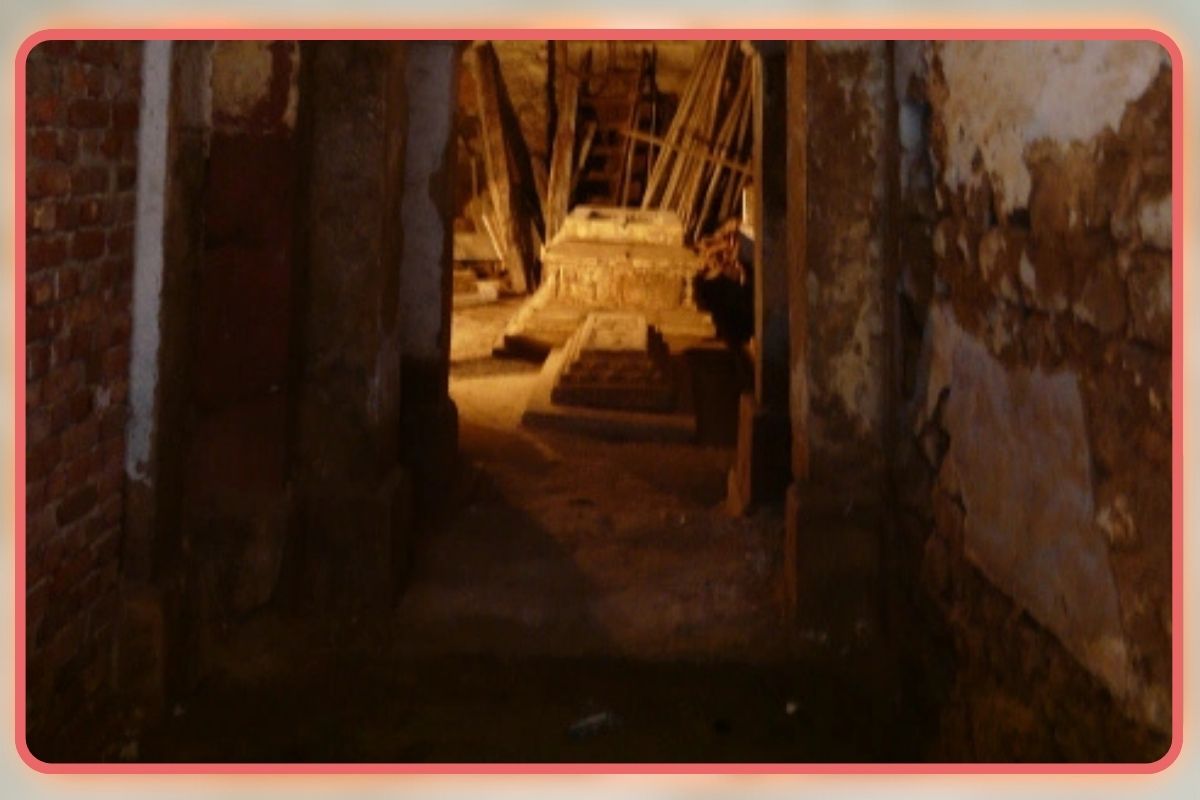
The tomb itself represents a turning point in Indian architecture. Every great Mughal monument that followed, from Humayun’s Tomb to the Taj Mahal, carries echoes of this early octagonal experiment. The arches, the dome, and the geometric precision all have roots in the attempts made here in the 14th century. Losing this monument to neglect means losing a crucial chapter in understanding the evolution of Indian architecture. Buildings are not just stone and mortar. They are records of innovation, ambition, and cultural exchange.
As Delhi continues to grow, older monuments struggle for attention and resources. The Tomb of Khan-i-Jahan Tilangani deserves better. It should be accessible, protected, and celebrated as the pioneering structure it is. Preservation is not about freezing the past. It is about maintaining connections between generations, about understanding the origins of our aesthetic traditions. Malik Maqbul served his adopted city with honour. It is time for Delhi to return the favour by ensuring his final resting place survives for centuries more, visible and valued once again.
Also Read: Mubarak Khan-ka-Gumbad: Delhi’s Hidden Octagonal Tomb in Lodi Gardens
You can connect with DNN24 on Facebook, Twitter, and Instagram and subscribe to our YouTube channel.

